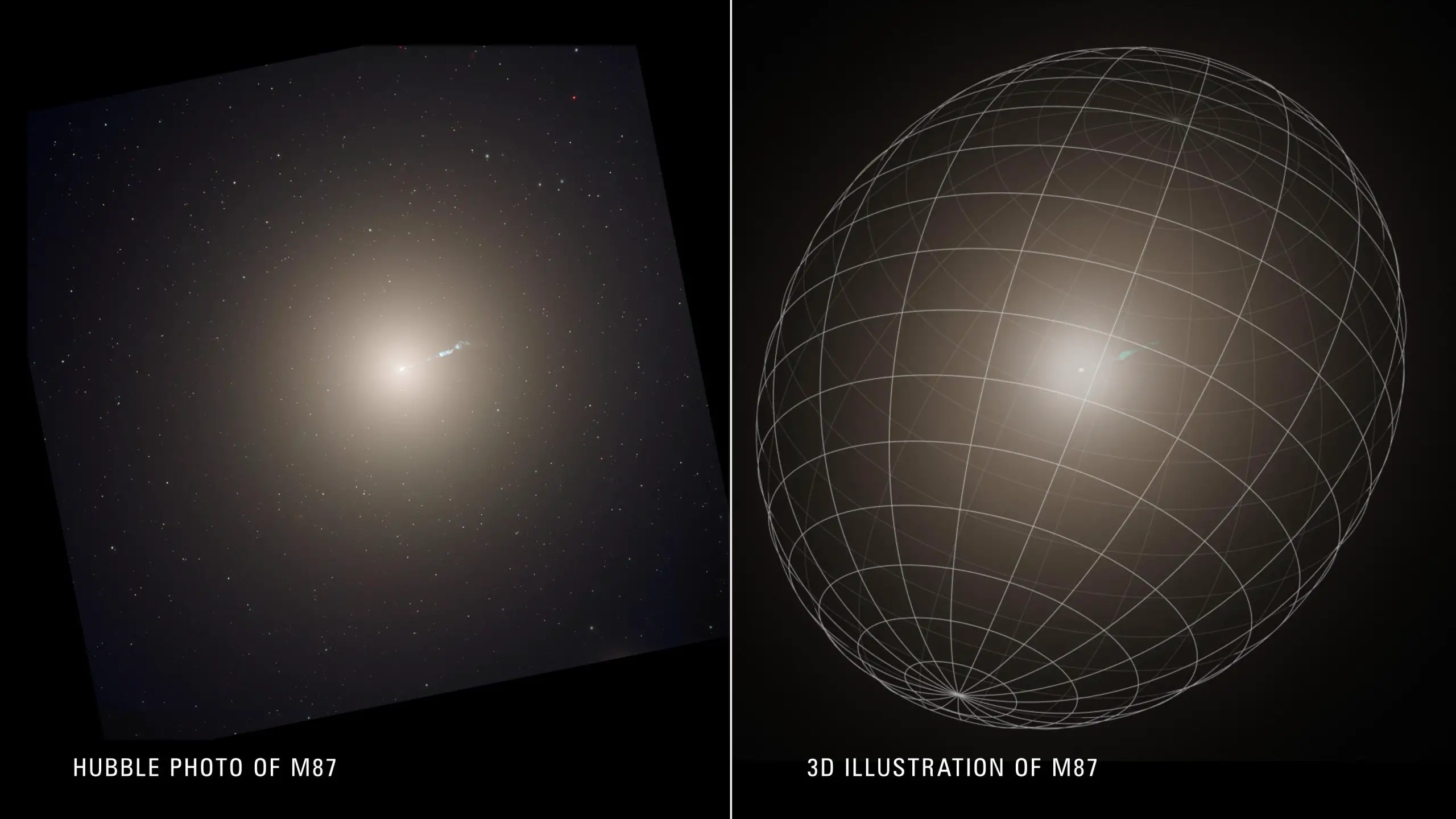True three-dimensional shape of M87 galaxy revealed
- April 24, 2023
- 0
Although the universe is estimated to contain 1 trillion galaxies, they only come in a few basic forms. American astronomer Edwin Hubble realized this at the beginning of
Although the universe is estimated to contain 1 trillion galaxies, they only come in a few basic forms. American astronomer Edwin Hubble realized this at the beginning of

Although the universe is estimated to contain 1 trillion galaxies, they only come in a few basic forms. American astronomer Edwin Hubble realized this at the beginning of the 20th century when he used the most powerful telescope on Earth at the time to probe the universe. A child collects the stones and arranges them according to the shapes. Many were flattened spiral disks of stars. Others were like cotton balls, which he called elliptical galaxies. Although the universe is three-dimensional, galaxies appear flat in the sky. They are too far away for astronomers to use stereoscopic vision.
Now, a century later, astronomers finally have the tools to predict the true shape of the elliptical galaxy. They named M87, one of the closest elliptical galaxies to Earth, 55 million light-years away at the center of the vast Virgo galaxy cluster. By tracking the movement of stars around the center of M87 like bees around the hive, they measured that the galaxy was potato-shaped. Not only did they have long and short axes that define an ellipse on a graph paper, they also measured a third axis that helps define three-dimensionality. Geometric term: triaxial.
This animation begins with a Hubble Space Telescope photo of the massive elliptical galaxy M87. It then switches to a computer model of the M87. The mesh is superimposed to trace its 3D shape, which is made more visible by rotating the model and mesh. This shape was obtained after careful observation with the Hubble and Keck telescopes. Because the galaxy was too far away for astronomers to use stereoscopic vision, they instead tracked the movement of stars around the center of M87 like bees circling a hive. This created a three-dimensional view of how stars are distributed throughout the galaxy, which informs the model.
Even though we live in a vast three-dimensional universe, celestial objects seen through a telescope appear flat because everything is so far away. Astronomers have now measured for the first time the three-dimensional shape of M87, one of the largest and closest elliptical galaxies. This galaxy turned out to be “triaxial” or potato-shaped. This stereo vision was made possible by combining the power of NASA’s Hubble Space Telescope with the WM Keck Earth Observatory in Maunakea, Hawaii.
In most cases, astronomers must use their intuition to find the true shape of deep space objects. For example, a whole class of galaxies called “ellipticals” look like blobs in pictures. Determining the true shape of giant elliptical galaxies will help astronomers better understand how large galaxies and central supermassive black holes form.
The scientists created a three-dimensional graph by measuring the motions of boiling stars around the supermassive black hole at the center of the galaxy. It was used to provide new information about the motion of stars, the shape and rotation of the galaxy, and also provided a new measurement of the black hole’s mass. Tracking the speed and position of the stars allowed the researchers to create a three-dimensional image of the galaxy.
Source: Port Altele
As an experienced journalist and author, Mary has been reporting on the latest news and trends for over 5 years. With a passion for uncovering the stories behind the headlines, Mary has earned a reputation as a trusted voice in the world of journalism. Her writing style is insightful, engaging and thought-provoking, as she takes a deep dive into the most pressing issues of our time.